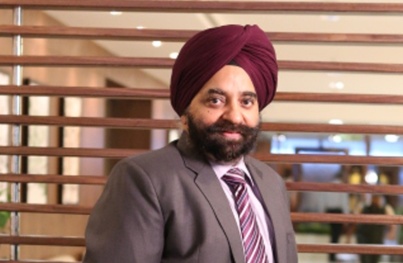Childrens fund offered by mutual funds offer flexibility to investors
BFSI Industry Interview

Mr. D.P. Singh is the Chief Business Officer of SBIMF and has over 30 years of rich experience in Banking and Financial services industry. Before becoming the ED & CMO in May 2012, he was the National Sales Head. He has been with company since 1998 and has been instrumental in expanding SBI Mutual Fund's reach in both urban and rural areas. Prior to joining the company, he was with SBI where he handled various assignments in Retail Banking, Corporate Credit and Information Technology Initiatives. He has done his Post Graduation in Commerce, Post Graduate Diploma in PMIR (Personnel Management & Industrial Relations) & CAIIB. He has interests in economics, current affairs and public relations.
Children’s education and career is one of the most important concerns for families. A common perception among investors about child plans is that they are insurance cum savings plans. For the benefit of the average retail investor please explain the difference between child plans offered by life insurance companies and mutual funds. How should investors choose between these two types of products?
The environment that kids are exposed to today, is very competitive and fierce. It’s not just the higher education that a parent should be planning for. Kids these days are open to the non-conventional career options in sports or even in the creative field. The financial commitment required in these fields is significantly high due to the equipment and training cost involved. This is where investing regularly through mutual funds can help.
As compared to the child plans offered by insurance companies, returns from mutual funds are market linked. Investments in the name of the child would be for long-term and historically, equity market has delivered good returns in long-term. Further, Children’s fund offered by mutual funds offer flexibility to investors. Even after the child attaining the age of majority, if there is no immediate requirement of funds, one can stay invested and keep earning returns on the investments. On the other hand, in case of intermittent requirement of funds, investors can withdraw a part of investment or opt for a systematic withdrawal plan post completion of the lock-in period.
SBI Magnum Children’s Benefit Fund is one few mutual fund solutions for children’s future. For the benefit of investors who may not be familiar with this fund, please explain the salient features of this scheme?
SBI Magnum Children’s Benefit Fund offers two plans viz Investment Plan and Savings Plan. The investment plan predominantly invests in equity instruments while the savings plan predominantly invests in debt securities. The investment plan offers the opportunity for long-term wealth creation and is aimed at building a healthy corpus to be utilised for securing children’s future. Investments in the fund can be made only through a minor account either solely or through a joint account of the minor with a parent/guardian. The scheme has a lock-in period of five years or till the minor attains the age of majority i.e. 18 years, whichever is earlier. The scheme has a graded exit load for redemptions within three years from the date of investment.
You are launching an NFO of SBI Magnum Children’s Benefit Fund – Investment Plan. How is the new plan different from your existing scheme?
The key difference between the two plans is the asset allocation i.e. the total allocation to equity and debt instruments. The new scheme, SBI Magnum Children’s Benefit Fund – Investment Plan has a wider investment universe as it can invest in foreign securities, gold and real estate investment trusts. It is an equity-oriented scheme where anywhere between 65%-100% can be invested in equity and related instruments while the remaining in debt, gold and foreign securities and REITs/InvITs. This scheme aims to generate wealth over a long period of time and therefore, should be considered for long-term financial planning.
The existing scheme SBI Magnum Children’s Benefit Fund – Savings Plan, on the other hand, is a debt-oriented scheme which invests between 75%-100% in debt instruments while the remaining investments can be made in equity, foreign securities and REITs/InvITs. This scheme is suited for short-to-medium term goals. Investors can select between the two based on their risk profile and investment horizon.
What are the broad investment strategies of the Investment Plan and Savings Plan both the equity and fixed income components?
The Investment Plan, which predominantly invests in equities, will follow a multicap strategy and is sector-agnostic, investing in high conviction ideas. Under normal circumstances, the debt portion of this scheme will be invested in high credit quality papers with a short-to-medium duration profile.
The existing plan SBI Magnum Children’s Benefit Fund – Savings Plan is a debt-oriented scheme with active duration management. The fund predominantly invests in high credit quality papers rated AAA/ sovereign or their equivalent. The fund also takes exposure to well-researched non-AAA papers to enhance the carry of the portfolio.
What are the points which a layman investor should consider when choosing between the Savings Plan and Investment Plan?
The Investment Plan is aimed for long-term financial planning as it invests a minimum of 65% in equity and related instruments. Equity as an asset class is best suited for long-term investments as it helps tide over short-term volatility and aims to generate inflation-adjusted returns over the long-term. Savings Plan, on the other hand, invests predominantly in debt instruments and is mainly suited for short-term to medium financial planning. Debt investments arerelatively less volatile as compared to equities and provides investors the opportunity to earn regular accrual income.
Can an investor switch from Investment Plan to Savings Plan or vice versa depending on their risk outlook at any stage of their investment tenure?
Yes, an investor can shift his/her investments from one plan to the other if the investments are not under the lock-in period and the child has not attainted the age of majority. As per regulations, an investor cannot switch or redeem his investments during the lock-in period. Further, as the child attains the age of majority (18 years) no further investments can be made in the scheme and hence the investor would not be able to shift between the two plans.
SBI Magnum Children’s Benefit Fund – Investment Plan has a high asset allocation towards equity. Many investors are concerned about the fallout of COVID-19 and the economic recession on the stock market. What is your advice to such investors and others who want to save for their children’s futures?
The impact of the current COVID-19 crises on the economy and the markets is expected to be for the short run. The economy and businesses are expected to return to normalcy over a period oftime. We have seen many such events impact the markets in the past, but these impacts have been short lived and equity markets have seen a gradual upmove in the long-term.
Investing for a child’s future is a long-term financial goal and equities should be the preferred asset class for long-term investing. Further, long-term investing through systematic investment plan can help in managing the short-term market volatility. Today, with changing education landscape and kids increasing interest towards unconventional career paths, the need of the hour is to start investing now and for long-term.
Mutual fund investments are subject to market risks, read all scheme-related documents carefully.
Recent Interviews
-
Partner Connect by Advisorkhoj with Mr Amit Kalra Glorious Path Pvt Ltd New Delhi
Dec 5, 2025
-
Partner Connect by Advisorkhoj with Mr Alok Dubey PrimeWealth Pune
Dec 1, 2025
-
In Conversation by Advisorkhoj with Ms Aparna Shanker Chief Investment Officer Equity The Wealth Company Mutual Fund
Nov 28, 2025
-
In Conversation by Advisorkhoj with Mr Sanjay Bembalkar Head Equity Union MF
Nov 28, 2025
-
In Conversation by Advisorkhoj with Mr Arjun Khanna Equity Fund Manager Kotak Mutual Fund
Nov 17, 2025
Fund News
-
Zerodha Mutual Fund launches Zerodha Nifty Short Duration G Sec Index Fund
Dec 26, 2025 by Advisorkhoj Team
-
Groww Mutual Fund launches Groww Nifty Chemicals ETF
Dec 26, 2025 by Advisorkhoj Team
-
DSP Mutual Fund launches DSP Nifty Next 50 ETF
Dec 19, 2025 by Advisorkhoj Team
-
DSP Mutual Fund launches DSP Nifty 500 Index Fund
Dec 19, 2025 by Advisorkhoj Team
-
Kotak Mahindra Mutual Fund launches Kotak Nifty Next 50 ETF
Dec 18, 2025 by Advisorkhoj Team





